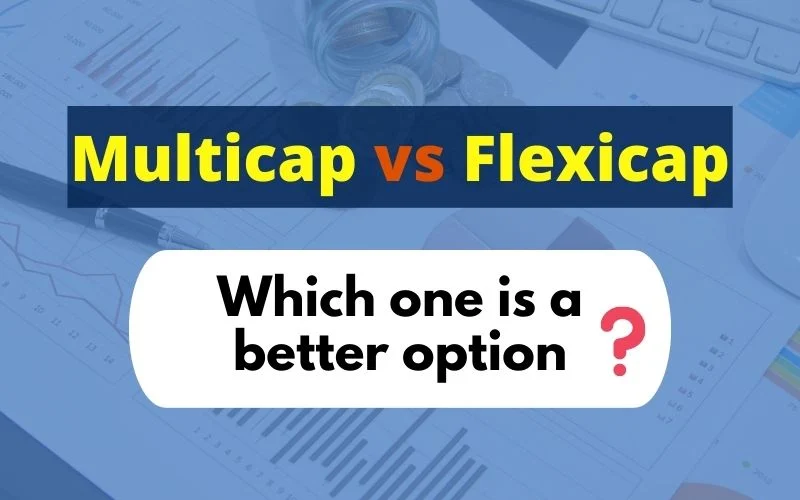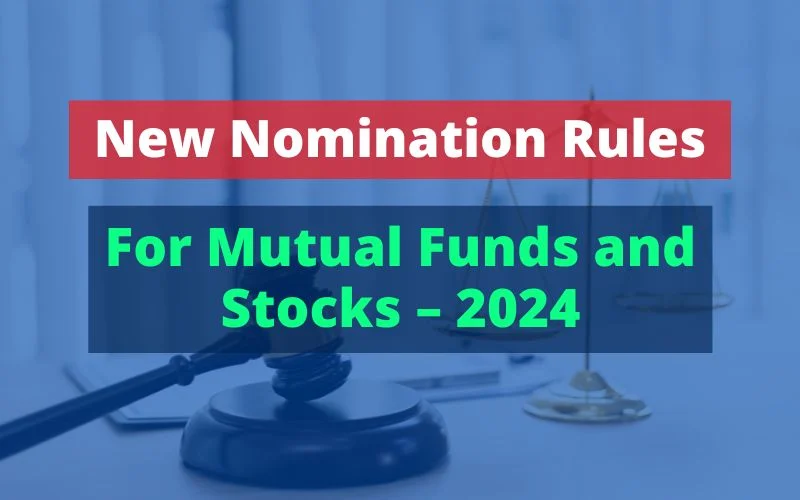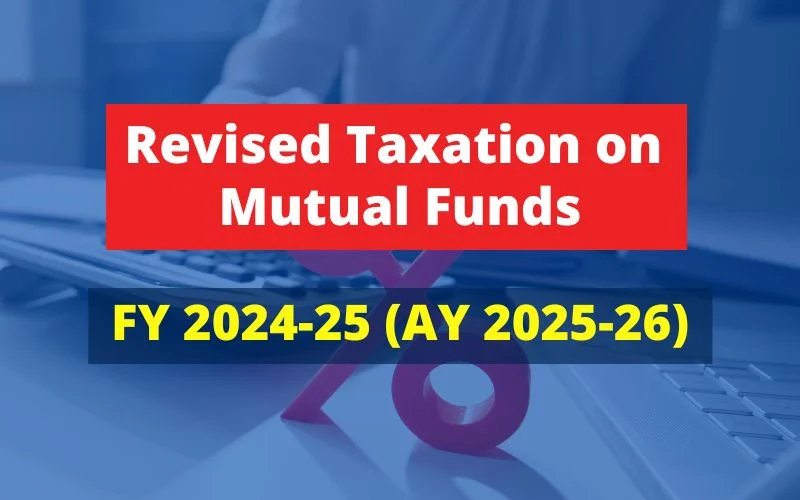Multicap and flexicap are popular investment approaches in equity mutual funds. Both schemes have advantages and considerations, and determining which is better depends on various factors, such as the investor’s risk appetite and investment goals. In this article, I will discuss the features, advantages, and points to consider before investing in multicap vs flexicap funds.

Multi Cap Funds
As the name indicates, multicap funds are mutual funds that invest in stocks across multiple market capitalizations, including large-cap, mid-cap, and small-cap companies.
As per the SEBI circular dated 11th September 2020, notified that fund manager has to maintain a minimum investment in equity & equity related instruments – 75% of total assets in the following manner:
- Minimum investment in equity& equity related instruments of large-cap companies- 25% of total assets
- Minimum investment in equity& equity related instruments of mid-cap companies – 25% of total assets
- Minimum investment in equity& equity related instruments of small-cap companies- 25% of total assets
Advantages of Multi-Cap Funds
Diversification: By investing across companies of various sizes, multicap funds provide diversification benefits. As specified by SEBI, diversification ensures the fund manager does not ignore or over-allocate in any categories among large cap, mid cap & small cap, and the fund is managed true to its label. It also helps reduce the risk of concentrating investments in a particular market segment.
Exposure to Growth: Investing in stocks across various market capitalizations allows multicap funds to capture growth potential in different sectors and segments. It equally provides exposure to established large-cap companies and high-growth potential mid-cap and small-cap companies.
Risk Management: Multicap funds can provide a balance between risk and reward. While large-cap stocks tend to be more stable and less volatile, mid-cap and small-cap stocks have the potential for higher returns. However, I consider multi-cap riskier as the allocations are set, and the fund manager must maintain a minimum allocation of 25% in the mid-cap & small-cap category.
Points to Consider Before Investing in Multicap Funds
Active Management: Multicap funds require active management as the fund manager needs to analyze and select stocks across different market segments. The fund’s performance largely depends on the skill and expertise of the fund manager in making investment decisions.
Volatility: Since multi-cap funds invest in companies of varying sizes, the fund’s performance can be affected by market volatility. Small-cap stocks, in particular, tend to be more volatile compared to large-cap stocks. Investors should be ready for fluctuations in the fund’s value.
📖Read More: 5 Mutual Fund Types: Learn To Choose The Right Fund For You
Flexicap Funds
Flexicap funds are mutual funds that invest across companies of different market capitalizations based on the fund manager’s market outlook and investment strategy. As the name indicates, the flexicap fund manager has the flexibility to allocate investments dynamically, shifting between large-cap, mid-cap, and small-cap stocks based on their assessment of market conditions.
Advantages of Flexicap Funds
- Flexibility: Multicap funds offer flexibility in terms of allocation, allowing fund managers to capitalize on opportunities in different market segments. They can adjust the portfolio based on changing market conditions, which may lead to better returns.
- Risk Management: Flexicap funds have the potential to manage risk effectively by adjusting allocations based on market conditions. During market volatility or economic uncertainty, the fund manager can reduce exposure to riskier segments and increase allocations to more stable sectors / large-cap stocks.
- Growth Potential: Flexicap funds expose growth opportunities across different market capitalizations. By investing in mid-cap and small-cap stocks, these funds can capture potential high-growth companies that may not be available in large-cap funds.
Points to Consider Before Investing in Flexicap Funds
- Active Management: Like multicap funds, flexicap funds require active management. Fund managers can actively research and analyze companies across the market spectrum to identify investment opportunities and potential risks. Their expertise and research capabilities can potentially result in better returns.
- Active Management Risks: The success of flexicap funds depends on the fund manager’s ability to make timely and accurate investment decisions. Investors should carefully evaluate the fund manager’s track record, experience, and investment approach before investing in a flexi-cap fund.
- Higher Volatility: Flexicap funds, especially those with higher exposure to mid-cap and small-cap stocks, can experience higher volatility than large-cap funds. Investors with a lower risk tolerance should carefully assess their risk appetite before investing in such funds.
📖Read More: How SEBI’s Proposal Can Make Your Mutual Fund Investment Cost-Effective
Quick Comparision- Multicap vs Flexicap
| Multi-Cap Funds | Flexi-Cap Funds |
|---|---|
| Invest 25% in large-cap, mid-cap & small-cap stocks; the remaining 25% can be invested in any category or mix. | Flexi cap has the flexibility to invest in large-cap, mid-cap & small-cap categories as fund managers wish without any minimum allocation rule. |
| Riskier since the investment allocations are set | Less risky as the fund manager can reduce exposure to riskier segments and increase allocations to more stable sectors / large-cap stocks. |
| Less Flexible | More Flexible |
Conclusion
Both multicap and flexicap funds have their own merits and considerations. The two choices depend on an investor’s risk appetite and investment goals. In multi-cap, investors are aware of the amount of risk they are undertaking, whereas, in flexi-cap funds, investors are not aware of the level of risk.
Investors seeking a more diversified portfolio with exposure to various market segments may find multi-cap funds suitable. On the other hand, investors willing to take on higher risk, seek the potential for higher returns, and are comfortable with market volatility may consider flexi-cap funds.
Choosing between multicap and flexicap funds should be based on carefully evaluating an investor’s risk profile, investment goals, and the fund manager’s expertise.
Important Articles Related to Personal Finance





